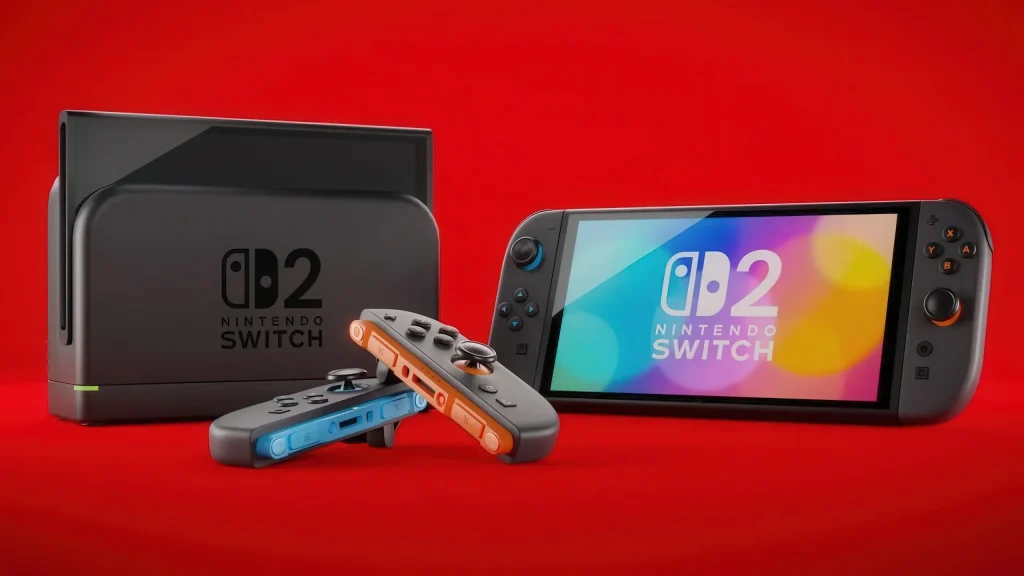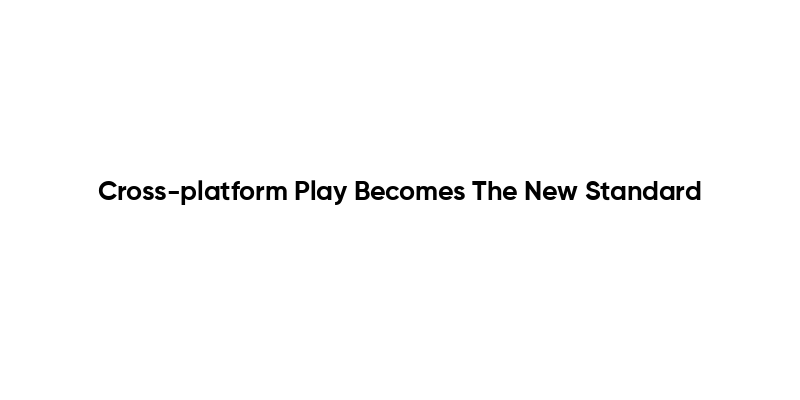Nintendo Switch 2 sales figures have recently made headlines, revealing impressive numbers that underscore the console’s remarkable performance in the gaming market. According to the latest Nintendo financial results, the hybrid console has achieved record-breaking milestones, selling 5.82 million units within its first quarter alone. This surge in demand resonates with Nintendo’s claims that the Switch 2 is now the fastest-selling console in US history, having moved 3.5 million units just days after its release on June 5. As detailed in the Nintendo earnings report, first-party software sales for the Switch 2 also saw significant success, with launch titles like Mario Kart World contributing to a total of 8.67 million units sold. With these striking figures, Nintendo is poised to further enhance its quarterly revenue by ramping up production to meet the growing consumer appetite for the Switch 2 and its compelling library of games.
In the gaming industry, the impressive performance of the next-generation console is evident through the recent spike in Nintendo Switch 2 sales. This upgraded version has captivated audiences, leading to an extraordinary launch period and high demand that has sparked interest among investors and fans alike. Recent financial disclosures highlight that software sales associated with the Switch 2 have also been notable, contributing to the overall growth of Nintendo’s earnings in the current fiscal period. With strong sales figures and innovative gaming experiences, the company’s pursuit of success with the Switch 2 remains a focal point as they look to maximize their offerings in the crowded gaming marketplace. As a result, industry analysts are keen to monitor how these developments will influence Nintendo’s broader financial trajectory and market competition.
Nintendo’s Financial Results: An Overview
Nintendo’s financial results for the quarter ending June 30, 2025, showcased remarkable growth, revealing net sales of ¥572 billion (approximately $3.8 billion), representing a staggering 132% increase year-over-year. This revenue surge highlights Nintendo’s robust performance in a highly competitive gaming market. Operating profit also saw an increase of 4.4% YoY, amounting to ¥56.8 billion ($377 million), despite an ordinary profit decline of 15.6%, underscoring the challenges that the company still faces in certain segments.
The increase in net sales aligns with the company’s successful launch strategy for the Switch 2, the latest entry in Nintendo’s beloved console lineup. As illustrated in the earnings report, this significant growth in earnings coincides with the console’s unprecedented uptake in the marketplace, signifying a strong consumer demand that bodes well for the future of Nintendo’s hardware position.
Switch 2 Sales: Unprecedented Launch Performance
The Nintendo Switch 2 launched on June 5, 2025, and set a new record as the fastest-selling console in U.S. history. In just four days, the hybrid console sold an astonishing 3.5 million units, reflecting a remarkable market reception. By the end of the first quarter, total sales for the Switch 2 reached 5.82 million units compared to the original Switch’s 0.98 million units during the same timeframe. This substantial sales figure not only showcases the effectiveness of Nintendo’s marketing strategies but also the shifting consumer preferences towards hybrid gaming experiences.
Executive remarks within the earnings call indicated that the demand for Switch 2 had exceeded internal expectations, prompting Nintendo to bolster production efforts. Such proactive steps indicate that the company is aiming to maintain momentum in sales figures for the Switch 2, fortifying its position in the market while aiming to capture an even larger share in the coming quarters. Undoubtedly, the impressive sales figures set high expectations for the continued success of the console.
Switch 2 Software Sales: A Strong Start
In conjunction with its hardware success, the software sales for the Nintendo Switch 2 are equally impressive. In total, Switch 2 software sales amounted to 8.67 million units during the first quarter. Notably, the launch title Mario Kart World sold 5.63 million units, almost matching the console sales. This strong software performance indicates both the captivating nature of the titles available at launch and the consumer’s willingness to invest in gaming experiences that complement their new hardware.
Additionally, the report highlights that Nintendo’s previous titles compatible with Switch 2 also enjoyed solid sales, contributing to the overall positive software sales figures. Successful franchises such as Mario Kart 8 Deluxe and Super Mario Party Jamboree not only reinforced Nintendo’s market presence but also created an ecosystem that encourages greater software engagement among new and existing users. This momentum is crucial for sustaining demand and achieving long-term growth in the competitive gaming industry.
The Impact of Digital Sales on Nintendo’s Performance
Despite the impressive growth in hardware and software sales, Nintendo reported a 13.5% decline in digital sales YoY. This decrease is attributed largely to diminishing sales of downloadable versions of packaged games for the Nintendo Switch, reflecting a potential shift in consumer purchasing behavior. As consumers lean more towards physical games with bundled content, this decline raises questions about digital strategy and how Nintendo might pivot to adapt in the future.
Amidst these challenges, Nintendo is looking to leverage its forthcoming titles to rejuvenate digital sales. With highly anticipated games like Pokémon Legends: Z-A on the horizon, the company is aiming to recapture the attention of both digital and physical gamers. The steadfast performance of first-party titles is often key to digital engagement, making it imperative for Nintendo to sustain software vitality to counterbalance dips in digital performance.
Future Outlook: Sustaining Momentum for Nintendo
As part of the financial results announcement, Nintendo affirmed no changes to its fiscal year forecast, projecting a remarkable 63.1% revenue increase by March 2026. This optimistic outlook is bolstered by the successful launch of the Switch 2 and anticipated upcoming titles that promise to engage existing customers while attracting new ones. Ensuring a steady flow of exciting content will be vital as Nintendo navigates the competitive landscape.
The company’s ability to maintain momentum through consistent game releases and robust production of the Switch 2 is crucial to fulfilling its financial targets. By addressing both software diversity and hardware availability, Nintendo aims to solidify its standing in the gaming market while continuing to innovate within its IPs. Ultimately, its strategic approach will dictate how well it can capitalize on the success of the Switch 2 and the broader content ecosystem.
Nintendo’s Expansion Opportunities Beyond Consoles
While concentrating on the success of its current hardware, Nintendo has also noted the need for diversification. With the digital entertainment landscape continually evolving, the company is exploring additional revenue streams such as mobile gaming and subscription services. This expansion strategy could provide new avenues for growth through collaborations or innovative gaming experiences tailored to mobile devices, capitalizing on the growing user base of mobile gaming.
Incorporating more IP-related ventures, similar to the past success seen with The Super Mario Bros. Movie, presents additional growth potential that could enhance brand visibility and consumer engagement. Upcoming projects, such as The Legend of Zelda movie, are poised to introduce millions of new fans to Nintendo’s rich catalog, creating additional consumer excitement around its game offerings and consoles.
Analyzing Third-Party Game Sales Performance
Despite the overwhelmingly positive metrics surrounding Nintendo’s hardware and first-party software, the financial report indicated a concerning trend regarding third-party game sales. While some hit titles performed well, many third-party games fell below initial sales estimates. This raises questions regarding the marketing strategies for partner games and how they can effectively contribute to overall software sales.
To counteract this trend, Nintendo may need to explore new collaborative marketing frameworks with third-party developers. Incentivizing developers to create compelling exclusive content could rejuvenate interest in their games on the Switch 2 platform. Enhanced promotional efforts or tailored marketing campaigns could incentivize customers to engage with third-party titles, potentially enhancing overall revenue figures.
The Role of Upcoming Titles in Long-Term Success
Upcoming titles, particularly high-profile releases like Pokémon Legends: Z-A, hold significant weight in Nintendo’s strategy for fortifying sales. The anticipation surrounding these launches can create buzz and significantly influence purchasing decisions among consumers, ensuring that the Switch 2 remains at the forefront of gaming discussions as its library expands.
Each new title not only serves to attract further engagement but also helps to extend the lifecycle of the Nintendo Switch 2. By continuously refreshing its game library with appealing content, Nintendo can retain its audience’s interest while drawing in new players, ultimately driving sales of both hardware and software well into the future.
Conclusion: Nintendo’s Path Ahead
As Nintendo navigates through the evolving gaming landscape, its latest financial results indicate a fruitful engagement strategy that aligns well with its consumer base. The positive performance of the Switch 2 and its games reflects a successful early phase in a new console era, setting a favorable precedent for the long-term trajectory of the company’s sales and brand impact.
Looking ahead, sustaining this positive momentum will require strategic planning, innovation, and a keen understanding of market demands. By continuing to monitor consumer behavior and adjusting its approaches in digital engagement and third-party collaborations, Nintendo can maintain a significant position within the global gaming arena.
Frequently Asked Questions
What are the latest Nintendo Switch 2 sales figures from the recent quarterly earnings report?
In the recent Nintendo earnings report for the quarter ending June 30, 2025, it was revealed that the Nintendo Switch 2 achieved impressive sales figures, with 5.82 million units sold globally in its first quarter. During its launch, the console sold 3.5 million units within just four days, making it the fastest-selling console in US history.
How did the Nintendo Switch 2 impact Nintendo’s financial results?
The Nintendo financial results showed a significant boost in quarterly revenue, which increased by 132% year-over-year (YoY) to ¥572 billion ($3.8 billion). This impressive growth is attributed largely to the strong sales of the Nintendo Switch 2, alongside successful software sales.
What are the software sales reported for the Nintendo Switch 2?
In the latest financial results, it was reported that Switch 2 software sales reached 8.67 million units in the first quarter. Notably, launch title Mario Kart World sold 5.63 million units, highlighting the demand for Switch 2 software titles.
Are Nintendo’s projections for future Nintendo Switch 2 sales optimistic?
Yes, Nintendo’s financial forecast remains optimistic, expecting a 63.1% increase in sales by the end of March 2026, signaling confidence in the continuing popularity and sales performance of the Nintendo Switch 2.
What factors contributed to the success of Nintendo Switch 2 sales?
The success of Nintendo Switch 2 sales can be attributed to several factors, including strong initial demand that exceeded expectations, robust first-party software sales like Mario Kart World, and strategic plans to increase production to meet consumer needs.
What challenges did Nintendo face regarding digital sales in relation to the Nintendo Switch 2?
The Nintendo earnings report indicated that digital sales were down 13.5% year-over-year, primarily due to a decrease in downloadable versions of packaged software for Nintendo Switch. This decline poses a challenge as Nintendo aims to maximize overall sales.
What titles drove the Nintendo Switch 2 software sales figures?
Key titles contributing to the Nintendo Switch 2 software sales figures include the launch game Mario Kart World, which sold 5.63 million units, as well as popular existing titles like Mario Kart 8 Deluxe and Super Mario Party Jamboree, all of which are playable on the Switch 2 platform.
| Key Financial Metrics | Value | Year-over-Year Change | |
|---|---|---|---|
| Net Sales | ¥572 billion ($3.8 billion) | +132% YoY | |
| Operating Profit | ¥56.8 billion ($377 million) | +4.4% YoY | |
| Ordinary Profit | ¥95.8 billion ($636 million) | -15.6% YoY | |
| Profit Attributable to Owners | ¥96 billion ($638 million) | +18.6% YoY | |
| Total Units Sold (Switch 2) | 5.82 million | ||
| Units Sold (original Switch) | 0.98 million | ||
| First-Party Software Sales | 8.67 million units | ||
| Digital Sales Change | -13.5% YoY | ||
Summary
Nintendo Switch 2 sales have surged, as highlighted by the company’s latest financial results for the three months ending June 30, 2025, showing a remarkable net sales increase of 132% year-over-year. The new hybrid console has already made a significant impact in the gaming market, achieving 5.82 million total units sold in just its first quarter, with impressive first-party software sales, particularly from titles like Mario Kart World. While there were some challenges in digital sales and IP-related business revenues, Nintendo remains optimistic about future growth and aims to maintain momentum with upcoming game releases. The overall outlook is strong, as Nintendo continues to strengthen production to meet the overwhelming demand for the Nintendo Switch 2.



